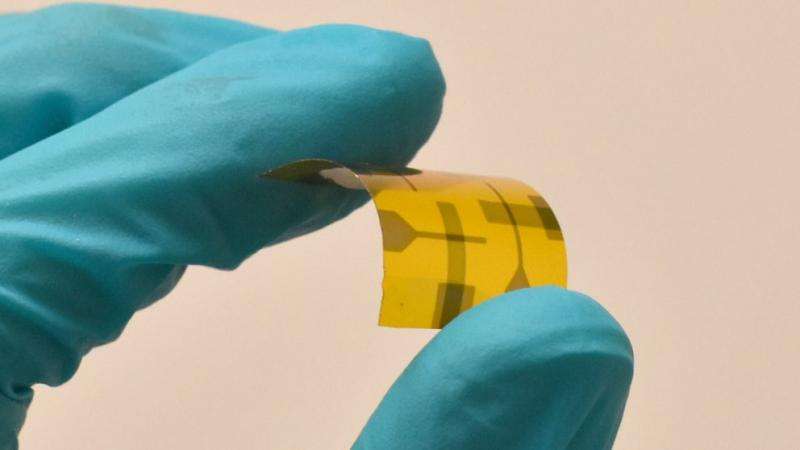First flexible memory device using oxide ferroelectric material

For the first time, researchers have been able to deposit an ultra-thin oxide ferroelectric film onto a flexible polymer substrate. The research team used the flexible ferroelectric thin films to make non-volatile memory devices that are wearable and resilient.
"Ferroelectric materials are capable of storing charge, which makes them ideal for non-volatile memory devices," says Jacob Jones, a professor of materials science and engineering at North Carolina State University and co-author of a paper on the work. "But ferroelectric materials tend to be brittle, and normally have to be made at high temperatures – which would destroy most polymers. We've now found a way to make an extremely thin film of ferroelectric material that can be made at low temperatures."
"What is most exciting about this work is the ability to make ferroelectric thin films at low temperatures and integrate them with carbon-based organic semiconductors to make highly flexible memory devices," says Franky So, the corresponding author of the paper and Walter and Ida Freeman Distinguished Professor of Materials Science and Engineering at NC State.
"The key to success of this work is the special technique we developed to make these ferroelectric thin films at low temperature and maintain the flexibility," says Hyeonggeun Yu, a postdoctoral researcher at NC State and lead author of the paper. "We have created a new device platform which can integrate these memory devices with other flexible electronic circuits."
"This advance allowed us to create a pliable ferroelectric that can be used to create stable memory storage units for use in energy-efficient electronic applications for use in everything from space exploration to defense applications," says Ching-Chang Chung, a postdoctoral researcher at NC State and co-author of the paper.
The researchers worked with hafnium oxide, or hafnia, a material that has ferroelectric properties when applied as a thin film. And, for the first time, the researchers were able to show that the flexible hafnia thin films exhibited ferroelectric properties with thicknesses ranging from 20 nanometers (nm) to 50 nm.
"This is a milestone in nanotechnology," So says.
"We made a low-voltage, non-volatile, vertical organic transistor using a hafnia thin film," Jones says. "That level of detail may only be exciting for those in the electrical engineering field. For everyone else, that means this is a practical discovery with very real applications."
"We've found that the prototype is fully functional and retains its functionality even when bent up to 1,000 times," Chung says. "And we're already working on what can be done to improve reliability when the material is bent more than 1,000 times."
More information: Hyeonggeun Yu et al. Flexible Inorganic Ferroelectric Thin Films for Nonvolatile Memory Devices, Advanced Functional Materials (2017).
Journal information: Advanced Functional Materials
Provided by North Carolina State University



















